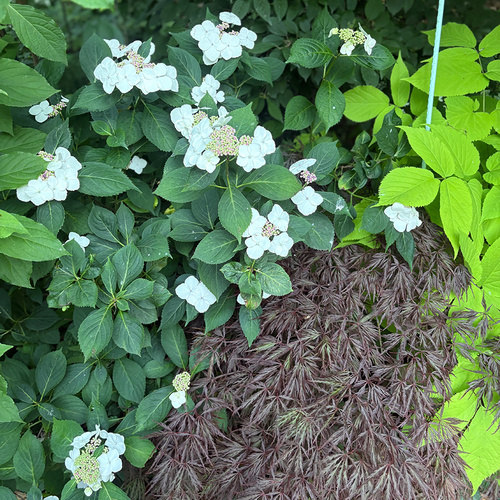
Happy Friday, GPODers!
We’re back in the endlessly enjoyable garden of Carla Zambelli Mudry in Malvern, Pennsylvania, today to catch up on the top performers from her early summer garden. In case you’ve missed it, Carla has been giving us a detailed look at the various plants that steal the show throughout the rapidly changing growing season. She started with the earliest blooms of the year (Carla’s Early Spring Flowers Part 1 and Part 2) and continued with updates right up to the end of spring and first tastes of summer (Carla’s Garden in June). Today she’s picking up where she left off with a look at the new plants that pop up at the end of June.
June is another month of daily surprises—every day, new blooms and wonderment of how lucky I am to have a garden. We had another week of crazy summer storms, and fortunately my garden came through with minimal damage . . . this time. I still have more planting to do, and I have been waging war with weeds. Today when I was taking these photos, I had a few instances of “I forgot I planted that!”
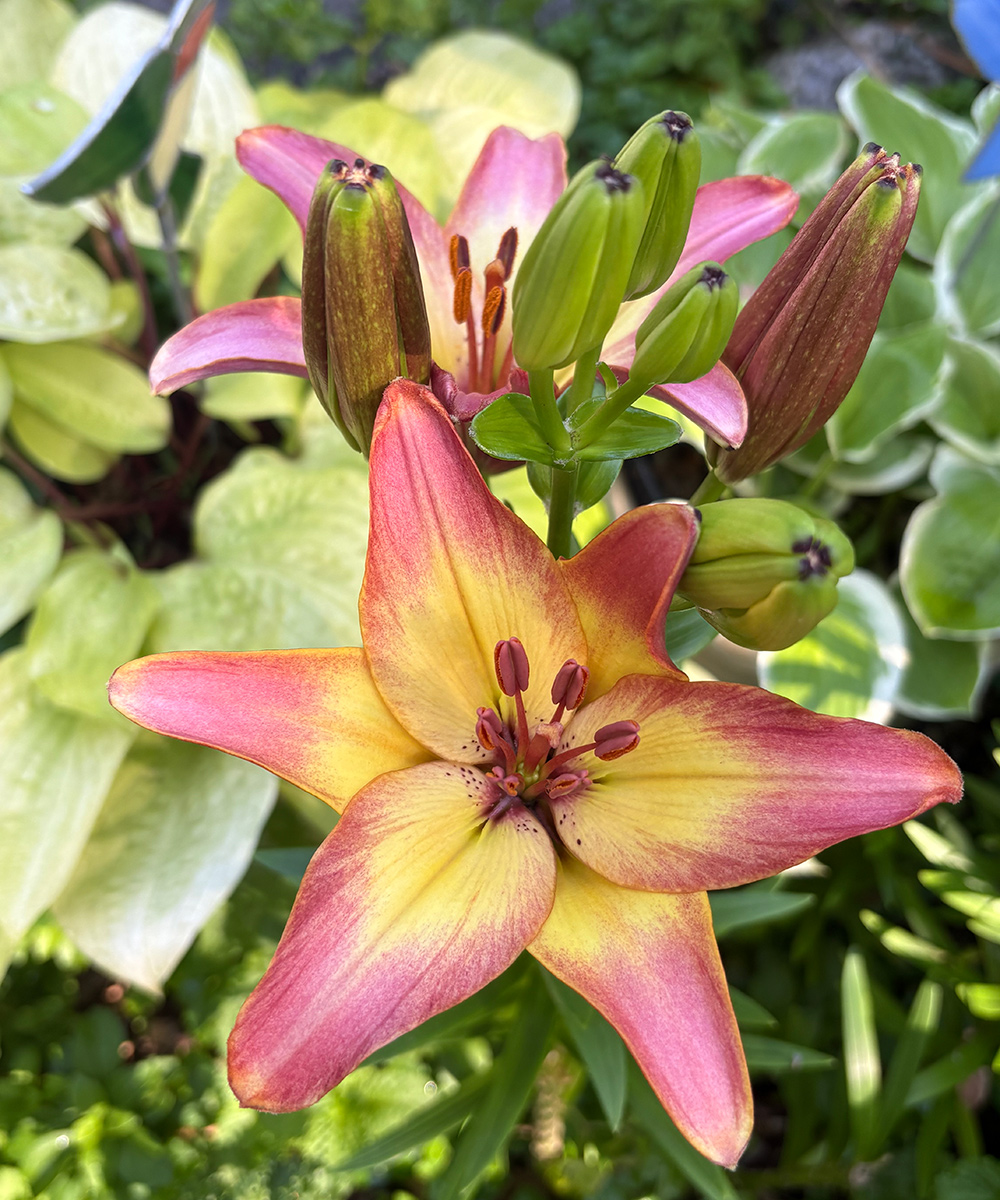 When the lilies begin to bloom, you know that summer has arrived. This dreamy variety is a spectacular mix of pink and yellow, potentially the cultivar ‘Forever Summer’ (Lilium ‘Forever Summer’, Zones 4–9).
When the lilies begin to bloom, you know that summer has arrived. This dreamy variety is a spectacular mix of pink and yellow, potentially the cultivar ‘Forever Summer’ (Lilium ‘Forever Summer’, Zones 4–9).
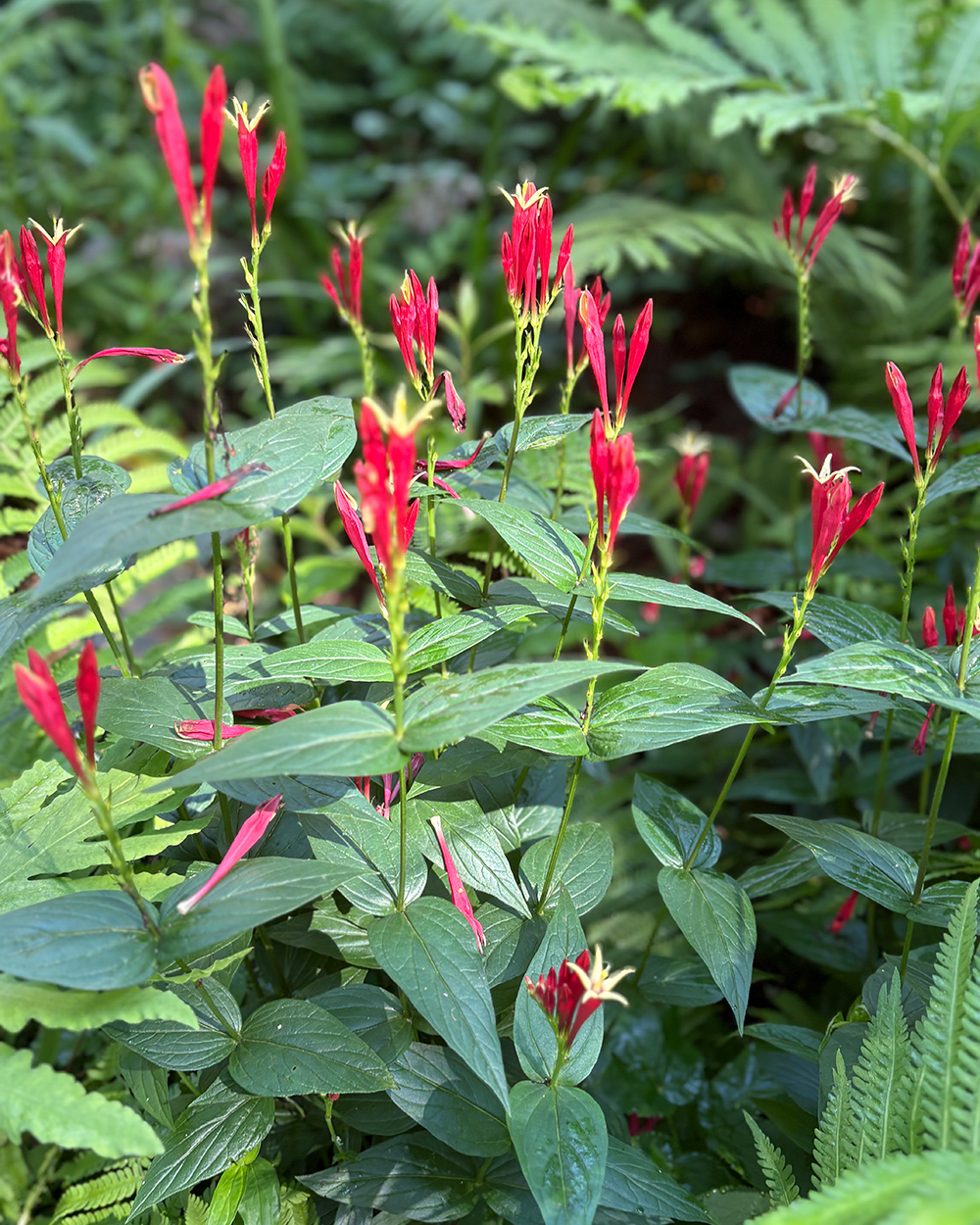 Carla’s woodland garden is full of big blooms and ornamental classics, but there are also plenty of native plants in the mix. Indian pink (Spigelia marilandica, Zones 5–9) is a North American native that blooms in June, thrives in shade, and is the perfect complement to Carla’s other pink and red flowers.
Carla’s woodland garden is full of big blooms and ornamental classics, but there are also plenty of native plants in the mix. Indian pink (Spigelia marilandica, Zones 5–9) is a North American native that blooms in June, thrives in shade, and is the perfect complement to Carla’s other pink and red flowers.
 Speaking of pink and red flowers, this ruffled daylily is a scrumptious shade of strawberry red.
Speaking of pink and red flowers, this ruffled daylily is a scrumptious shade of strawberry red.
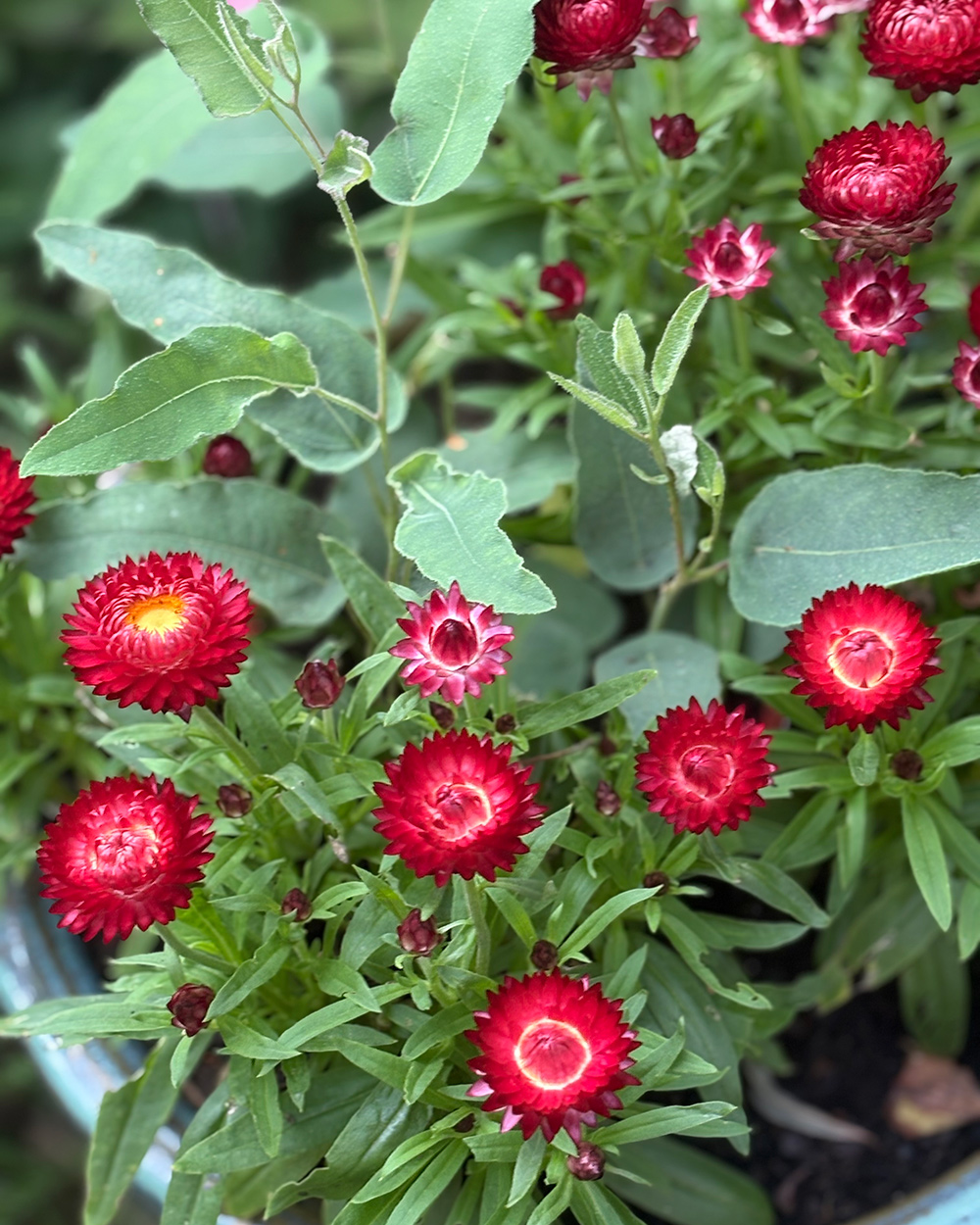 When looking for annuals, we all want plants that will go the distance and give us the biggest bang for our buck. Strawflowers (Xerochrysum bracteatum, Zones 8–10 or as an annual) are always a no-brainer for me. Their bright blooms are an incredible addition to containers all summer long and will keep kicking into fall. However, the strawflower show doesn’t need to end there. Also known as “everlasting flower,” these blooms are very popular in the dried flower market because they retain their color after drying. Saving some of these blooms at the end of the year to dry gives you endless decor options right through winter.
When looking for annuals, we all want plants that will go the distance and give us the biggest bang for our buck. Strawflowers (Xerochrysum bracteatum, Zones 8–10 or as an annual) are always a no-brainer for me. Their bright blooms are an incredible addition to containers all summer long and will keep kicking into fall. However, the strawflower show doesn’t need to end there. Also known as “everlasting flower,” these blooms are very popular in the dried flower market because they retain their color after drying. Saving some of these blooms at the end of the year to dry gives you endless decor options right through winter.
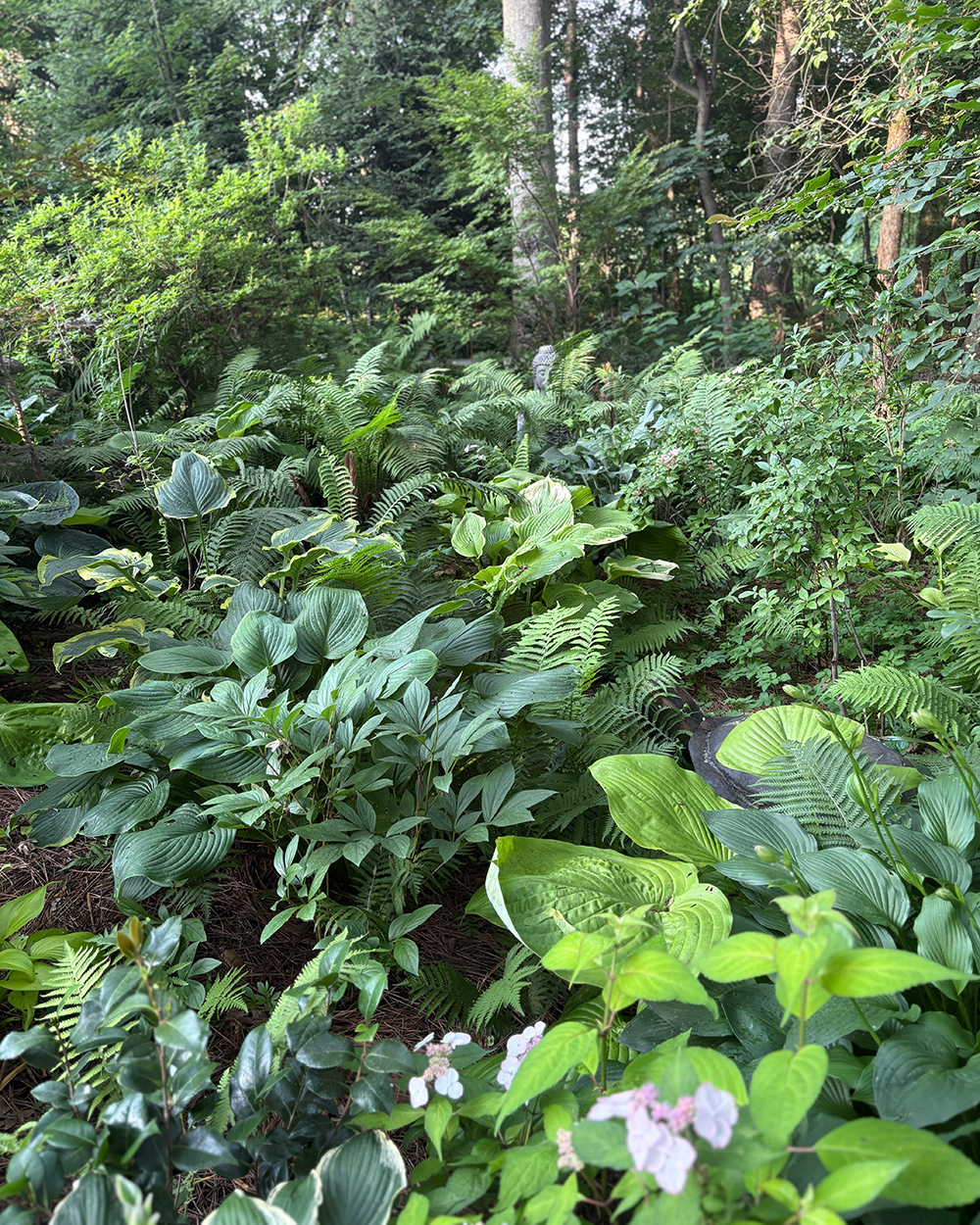 Flowers might be the summer garden’s gems, but lush foliage is the precious metal that links all those shimmering beauties together. In Carla’s woodland garden, a mixture of fantastic foliage plants is integral to her landscape.
Flowers might be the summer garden’s gems, but lush foliage is the precious metal that links all those shimmering beauties together. In Carla’s woodland garden, a mixture of fantastic foliage plants is integral to her landscape.
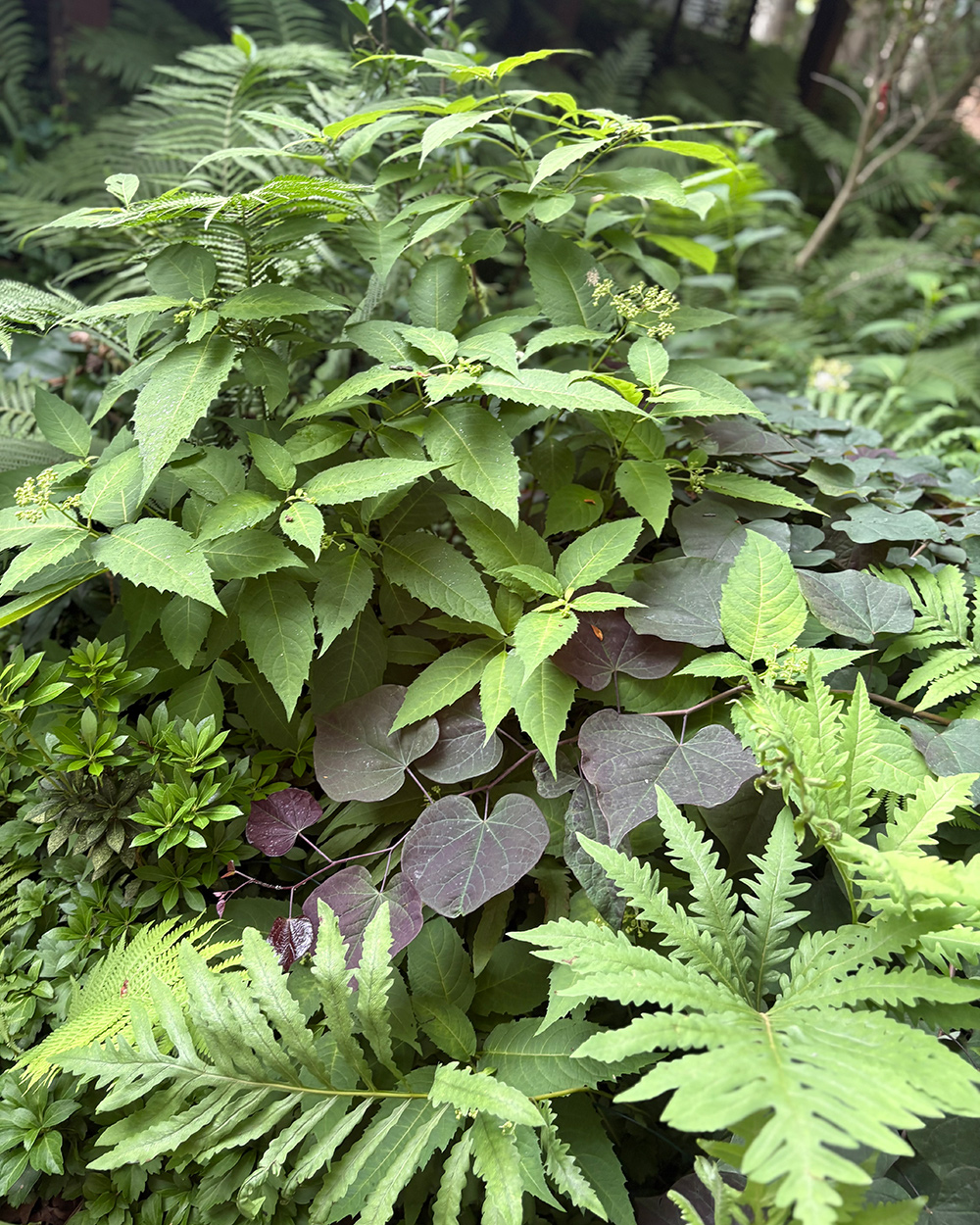 While hostas are always an easy choice, Carla collects a range of diverse foliage to mix colors, textures, and forms for fascinating vignettes.
While hostas are always an easy choice, Carla collects a range of diverse foliage to mix colors, textures, and forms for fascinating vignettes.
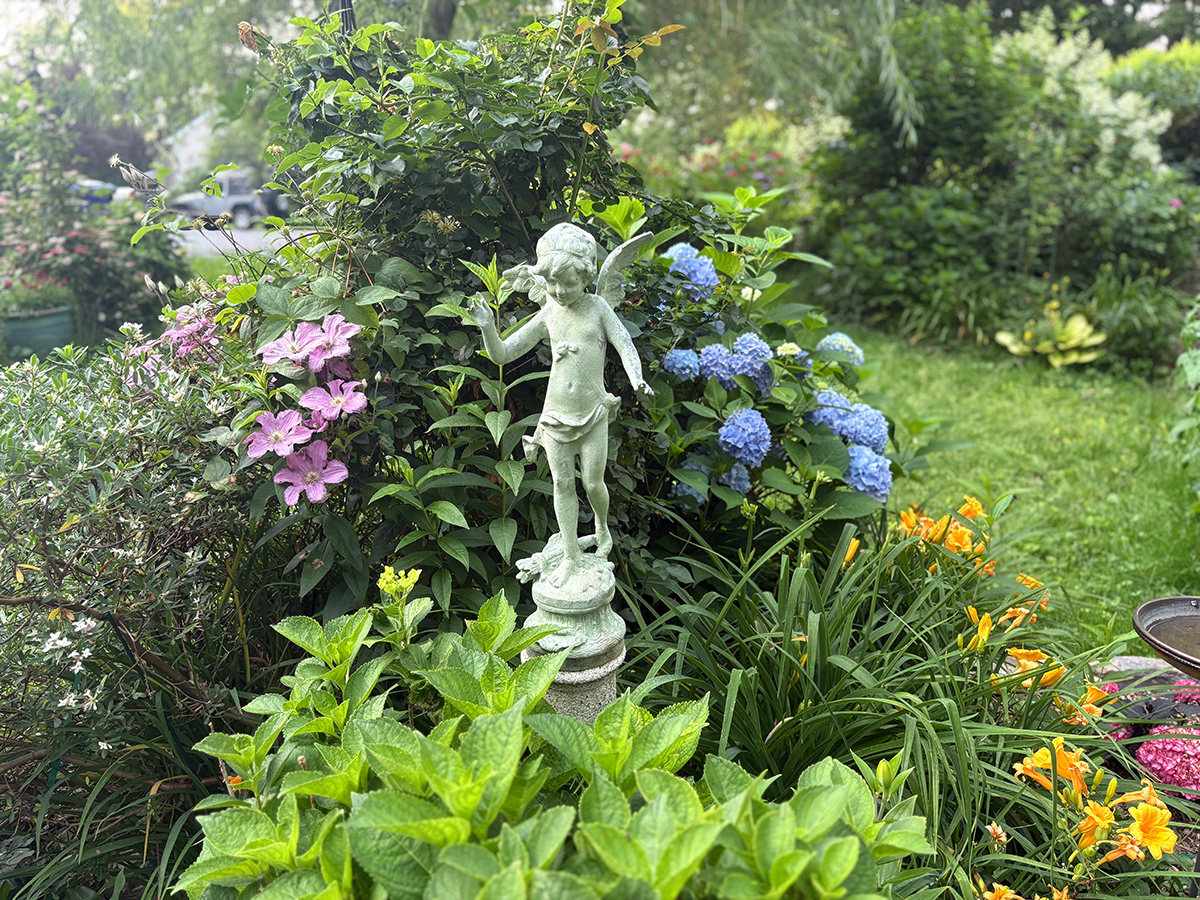 In Carla’s last submission, she showcased some of her hydrangea and clematis collections, and as the month continued on, their colorful performance kept up.
In Carla’s last submission, she showcased some of her hydrangea and clematis collections, and as the month continued on, their colorful performance kept up.
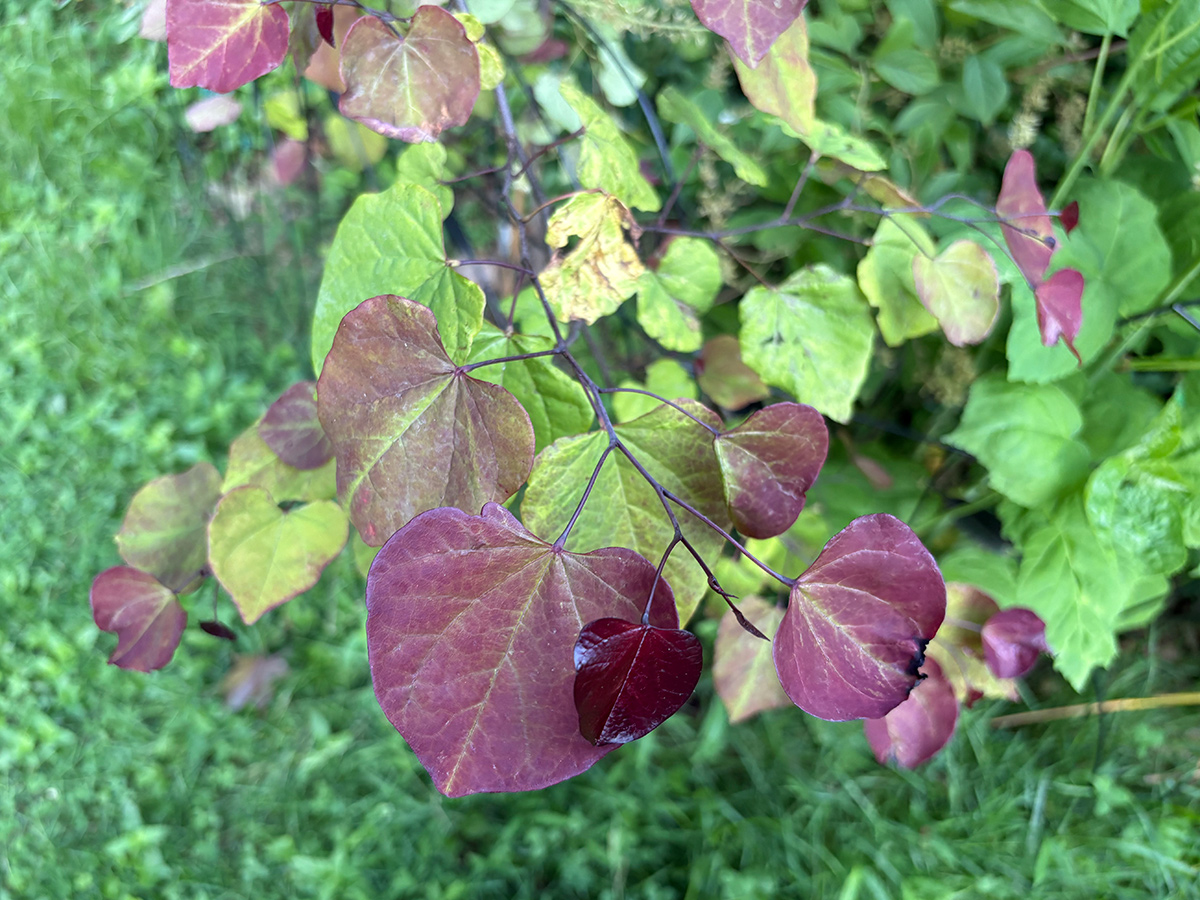 Even more foliage giving Carla’s gorgeous blooms a run for their money: Flame Thrower® Eastern redbud (Cercis canadensis ‘NC2016-2’, Zones 5–9) gives a fall-like display of color from spring through summer, before transforming entirely to yellow in autumn.
Even more foliage giving Carla’s gorgeous blooms a run for their money: Flame Thrower® Eastern redbud (Cercis canadensis ‘NC2016-2’, Zones 5–9) gives a fall-like display of color from spring through summer, before transforming entirely to yellow in autumn.
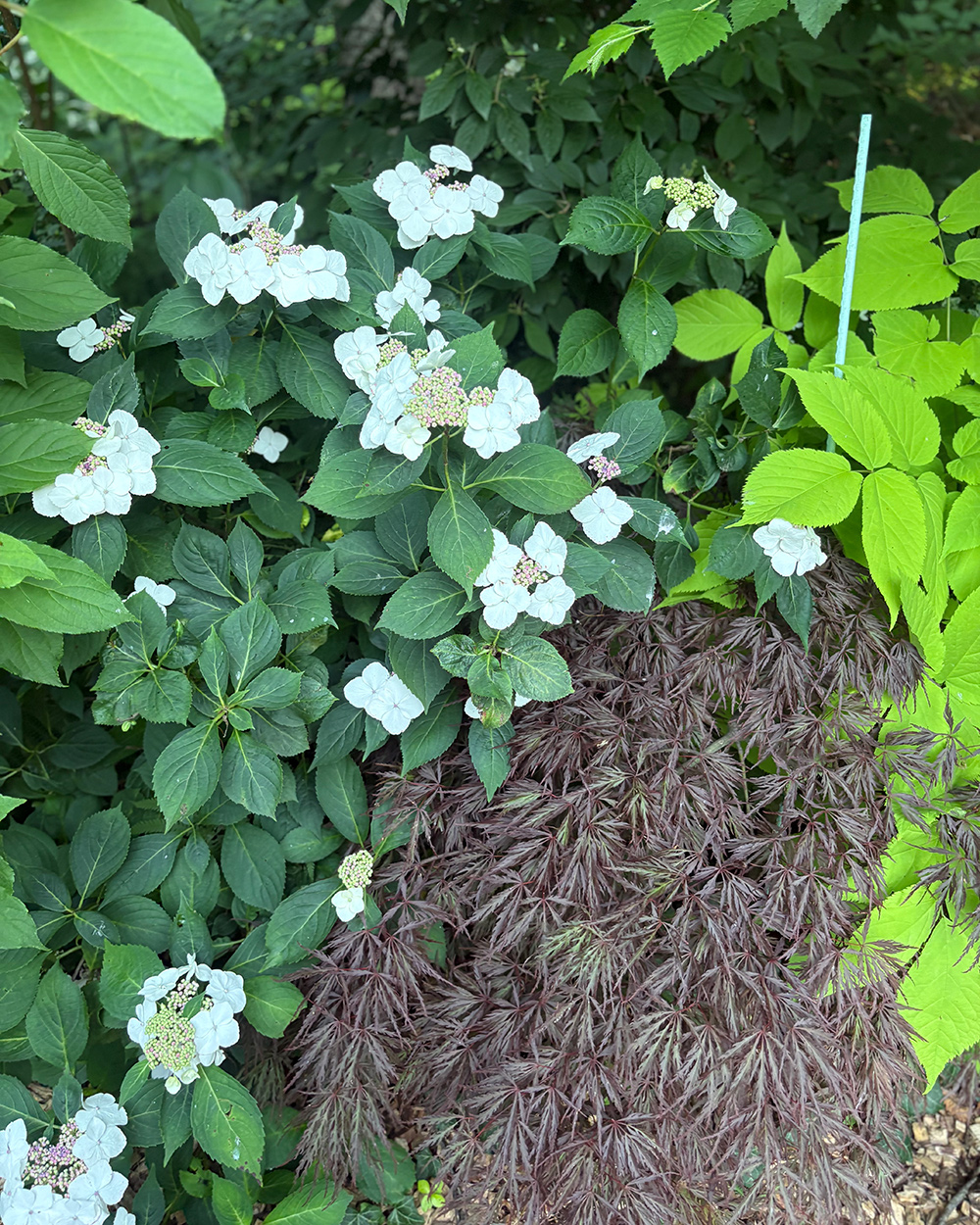 However, the best displays are when flowers and foliage work together to create something spectacular. White hydrangea blooms are made brighter in contrast to the deep burgundy/purple laceleaf maple.
However, the best displays are when flowers and foliage work together to create something spectacular. White hydrangea blooms are made brighter in contrast to the deep burgundy/purple laceleaf maple.
Thank you so much for another incredible update on your garden, Carla! The evolution your plants go through, from the earliest days of spring blooms to the first snowfall, is absolutely incredible, and the surprises along the way are just the cherry on top.
How do flowers and foliage work together in your garden? Do you have a woodland garden where foliage glows, like Carla? Or is foliage the anchor that keeps your flowers looking fresh in the bright sun? Consider sharing your garden highlights with the blog! Follow the directions below to submit photos via email, or send me a DM on Instagram: @agirlherdogandtheroad.
We want to see YOUR garden!
Have photos to share? We’d love to see your garden, a particular collection of plants you love, or a wonderful garden you had the chance to visit!
To submit, send 5–10 photos to [email protected] along with some information about the plants in the pictures and where you took the photos. We’d love to hear where you are located, how long you’ve been gardening, successes you are proud of, failures you learned from, hopes for the future, favorite plants, or funny stories from your garden.
Have a mobile phone? Tag your photos on Facebook, Instagram, or Twitter with #FineGardening!
Do you receive the GPOD by email yet? Sign up here
Fine Gardening Recommended Products
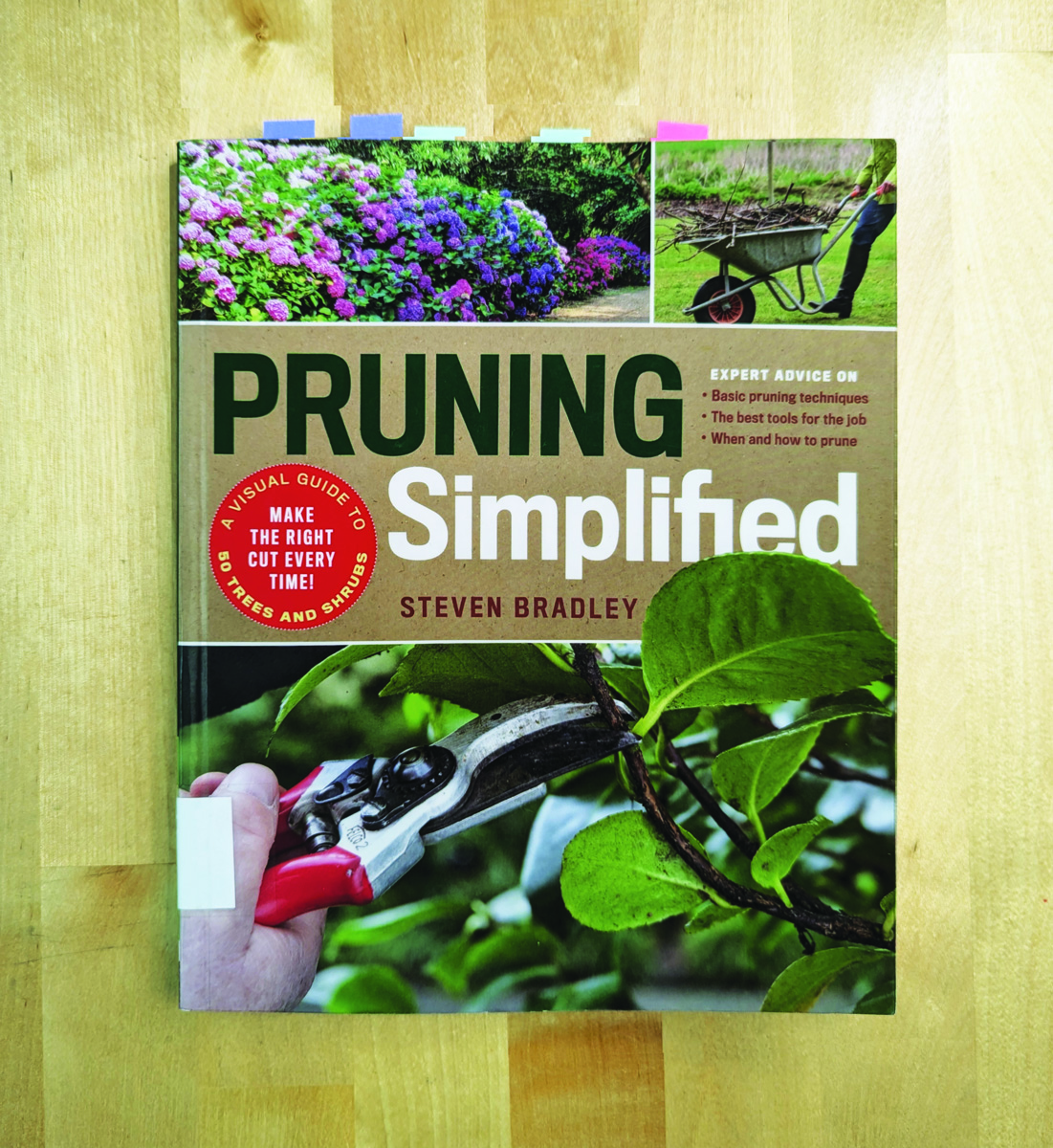
Pruning Simplified: A Step-by-Step Guide to 50 Popular Trees and Shrubs
Fine Gardening receives a commission for items purchased through links on this site, including Amazon Associates and other affiliate advertising programs.
Pruning Simplified shows you exactly how to do it. This must-have guide offers expert advice on the best tools for the job, specific details on when to prune, and clear instructions on how to prune. Profiles of the 50 most popular trees and shrubs—including azaleas, camellias, clematis, hydrangeas, and more—include illustrated, easy-to-follow instructions that will ensure you make the right cut the first time.
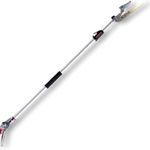
ARS Telescoping Long Reach Pruner
Fine Gardening receives a commission for items purchased through links on this site, including Amazon Associates and other affiliate advertising programs.
Telescopes from 4 to 7′. Cut and Hold (160) Blades. Drop forged blades for unsurpassed long lasting sharpness. Lightweight, 2.3 lbs., for continued use. Perfectly balanced for easy pruning.








